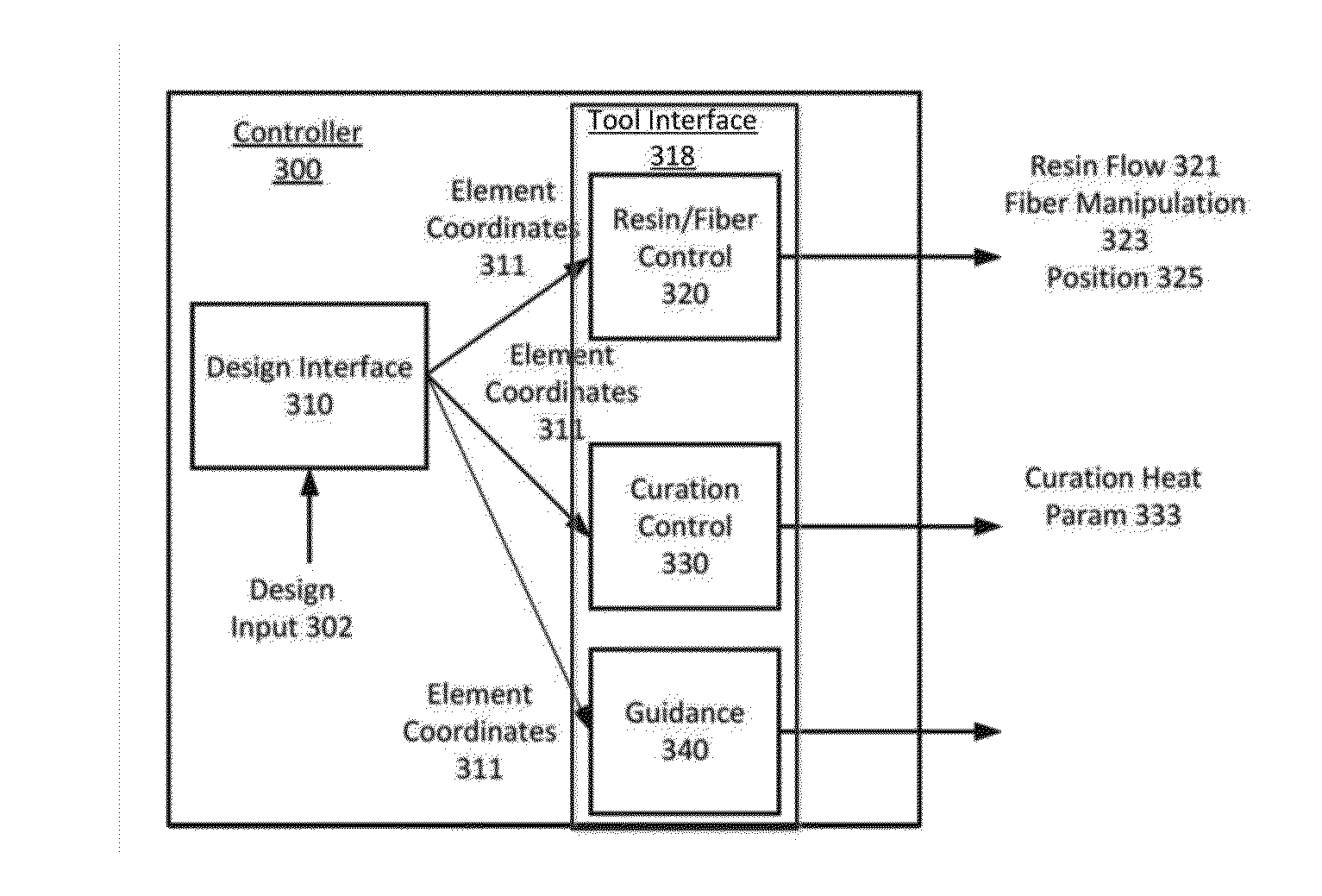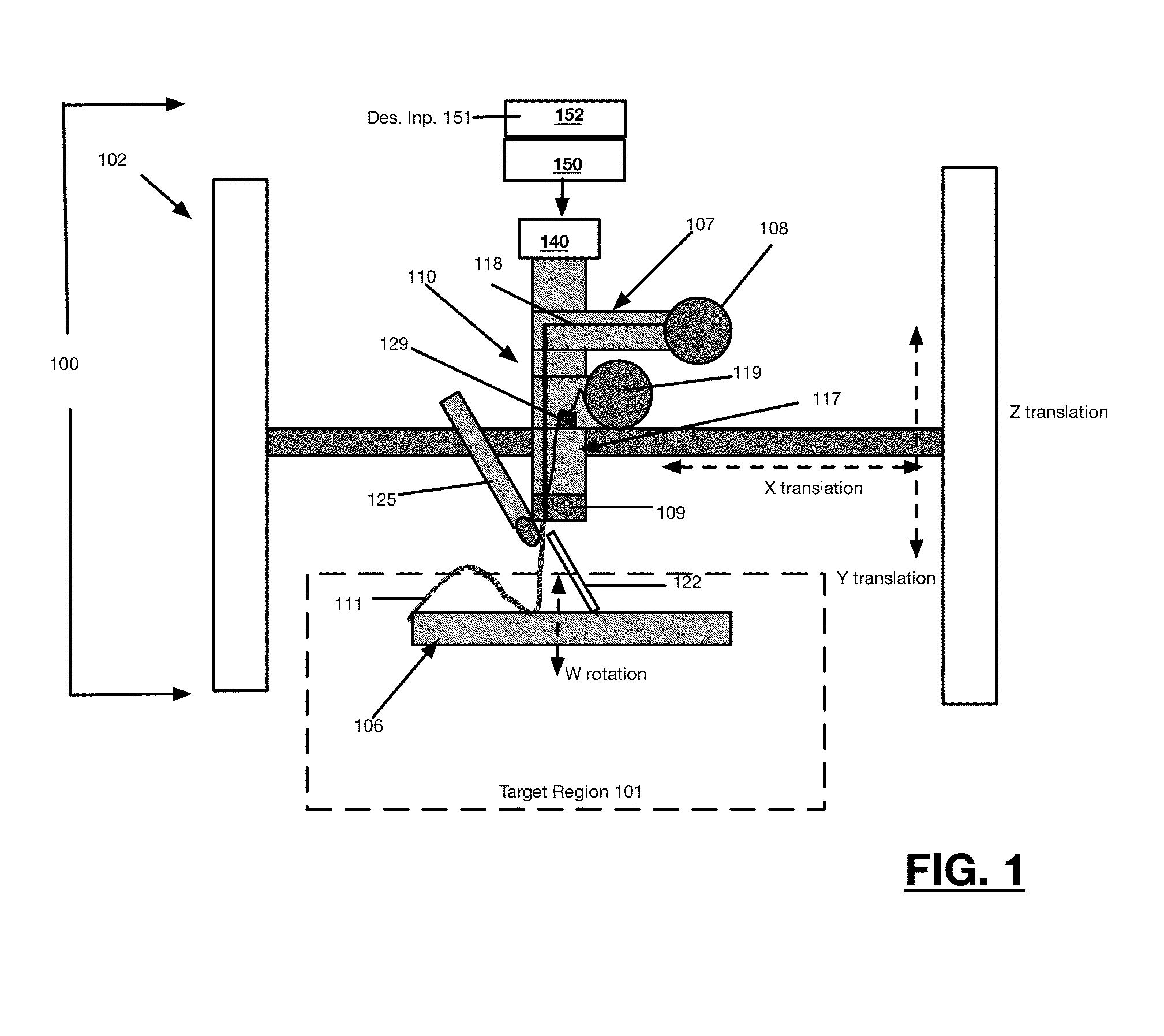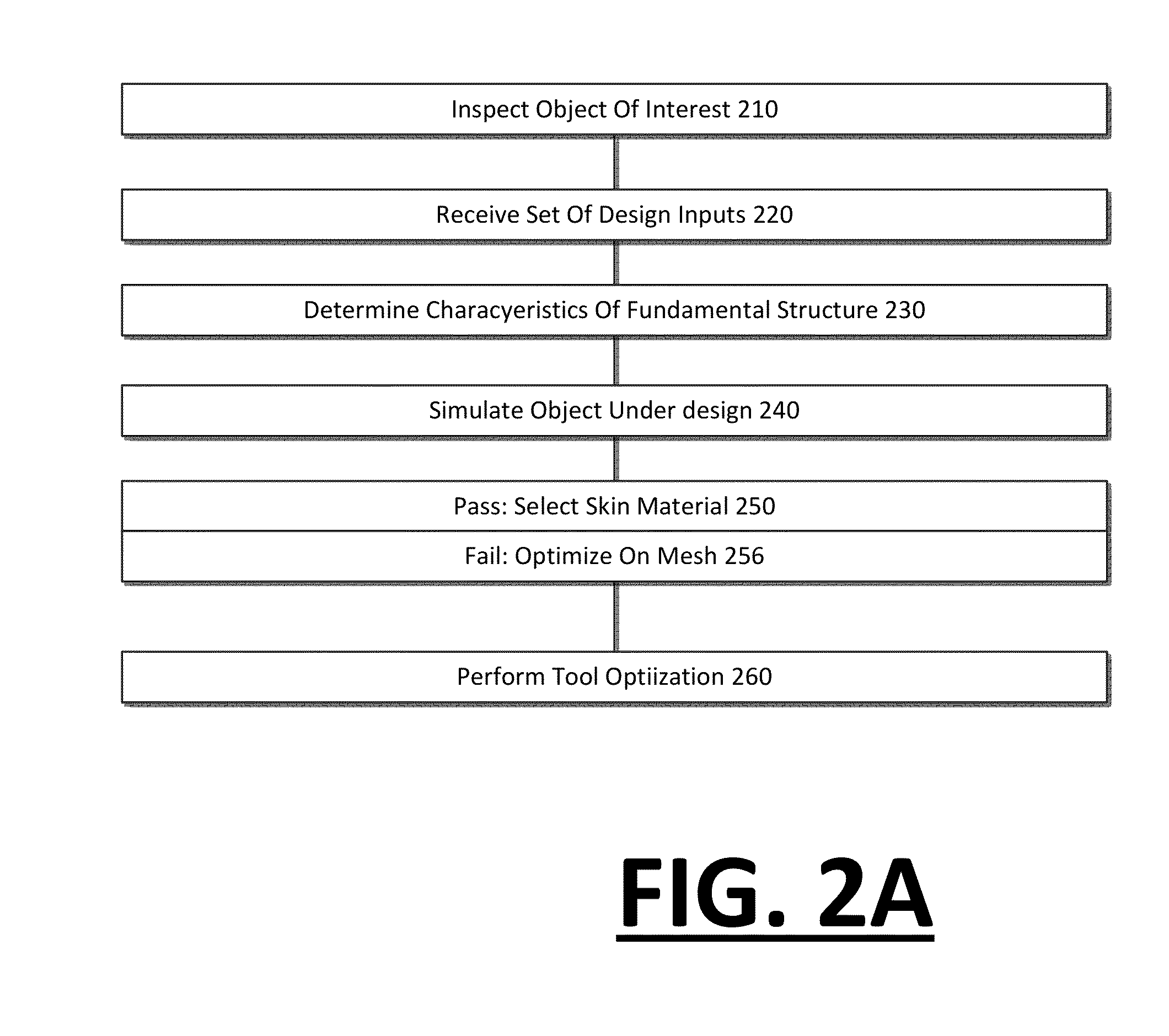Automated design, simulation, and shape forming process for creating structural elements and designed objects
a technology of structural elements and designed objects, applied in the direction of 3d object support structures, process and machine control, program control, etc., can solve the problems of not allowing for material property design in the z-axis, consuming unnecessary time, materials, and wasting composite parts
- Summary
- Abstract
- Description
- Claims
- Application Information
AI Technical Summary
Benefits of technology
Problems solved by technology
Method used
Image
Examples
example
[0075]FIG. 10 illustrates an example of a shaped object produced using a structural element such as described with examples provided herein. In FIG. 10, an object is scanned using a structured sensor scanning device then imported into a software program with algorithms that optimize both the physical properties (e.g. structural and electrical) then optimize the tool path for forming the shaped object. In some embodiments, the sections formed using, for example, a three-dimensional printing tool such as described with an example of FIG. 1, with structural elements include a fiber core or resin exterior which optionally carry conductive traces. With conductive core or traces thereof can be designed into electrical patters which can interconnect or ground electrical components or other elements to form, for example, a printed wiring board.
[0076]The conductive material and the non-conductive material can be deposited using the same robot and head or different head or robot. The conducti...
examples
[0077]A 3-axis machine with 3 stepper motors and an Arduino microcontroller was purchased from Inventables.com (Shapeoko 2) the system can move about 6 inches in z-direction, and 18 inches in x and y directions. A small reel of S-glass fiber roving purchased from AGY Inc. Aiken S.C. (ZenTron 758-AB-675) was used as the fiber. The glass roving was pulled from a bobbin and pushed through a tube into a feedblock. The individual fiber was around 10-20 microns in diameter and the roving is around 0.5 mm in diameter The glass roving was pushed in a controlled metering fashion using a stepper motor driven soft wheel and a steel bearing. Simultaneously a UV curable liquid resin was metered into the feedblock using a syringe pump. The feedblock is the manifold where the fiber and liquid resin are intimately mixed before shaping and curing to form a solid shape. The fiber coated with the resin was around 1 mm in diameter when cured. A UV light (Omnicure 2000) was aimed at the exit of the feed...
PUM
| Property | Measurement | Unit |
|---|---|---|
| diameter | aaaaa | aaaaa |
| diameter | aaaaa | aaaaa |
| diameter | aaaaa | aaaaa |
Abstract
Description
Claims
Application Information
 Login to View More
Login to View More - R&D
- Intellectual Property
- Life Sciences
- Materials
- Tech Scout
- Unparalleled Data Quality
- Higher Quality Content
- 60% Fewer Hallucinations
Browse by: Latest US Patents, China's latest patents, Technical Efficacy Thesaurus, Application Domain, Technology Topic, Popular Technical Reports.
© 2025 PatSnap. All rights reserved.Legal|Privacy policy|Modern Slavery Act Transparency Statement|Sitemap|About US| Contact US: help@patsnap.com



